- Joined
- Jan 31, 2017
- Messages
- 109
- Reaction score
- 234
So I have been using a coast-to-coast overflow for several years. The last two tanks I had had internal glass c2c overflows consisting of basically an L up against the back wall with my bean animal drains coming into the overflow and attaching to the back of the tank.
This was a great overflow, great surface skimming, etc.. The main two problems were salt creep from the water cascading over the vertical glass overflow and sound from said water.
I recently lost my tank due to Hurricane Matthew. We were unable to get back on the island for about 4 days, and even when we got home we had no power for 7 days and no water for about 10. Needless to say it was a total loss. We fared better than some who lost their homes or had major tree/flood damage.
That aside, we decided to go a different route with the new tank, bigger, and in wall. I was playing around with a few overflow designs and wanted something that reduced splashing and noise form water flowing over the weir.
I used to skateboard a lot in my younger days in SoCal and the though of a quarter pipe hit me for some reason. I originally wanted to use an 8" piece of pvc so the quarter pipe would be roughly 4", but a buddy who is a plumber had some 6" laying around and gave it to me for free.
I didn't take pics of cutting the pipe, but it's straight forward. I secured a few 2x4's to a table, then secured 2x6's to the sides of those to make a channel for the pvc pipe to lay in. I secured the pipe to the table and 2x6's with some screws so it wouldn't rotate. I then snapped a chalk line from one end to the other and grabbed my jigsaw and went to town. I did screw a third 2x6 to the top of one of the vertical 2x6's to act as a straight edge for the jigsaw to ride against, ensuring a straight cut.
***I would not recommend trying to cut PVC on a table saw, it tends to twist as it is cut and has a very high tendancy to kick back at you, very unsafe.***
I made my first cut, rotated the pipe 1/4 turn, and repeated the steps. I then clamped the quarter pipe to a table and routed the inside lip where water would flow over with an 1/8" round-over bit to aid in smooth flow over the pipe.
Next, I sanded the pipe inside and out and painted it black to match the background. I then siliconed it in place and am currently waiting on the silicone to cure so I can stand it up, silicone the inside, and then test it for flow.
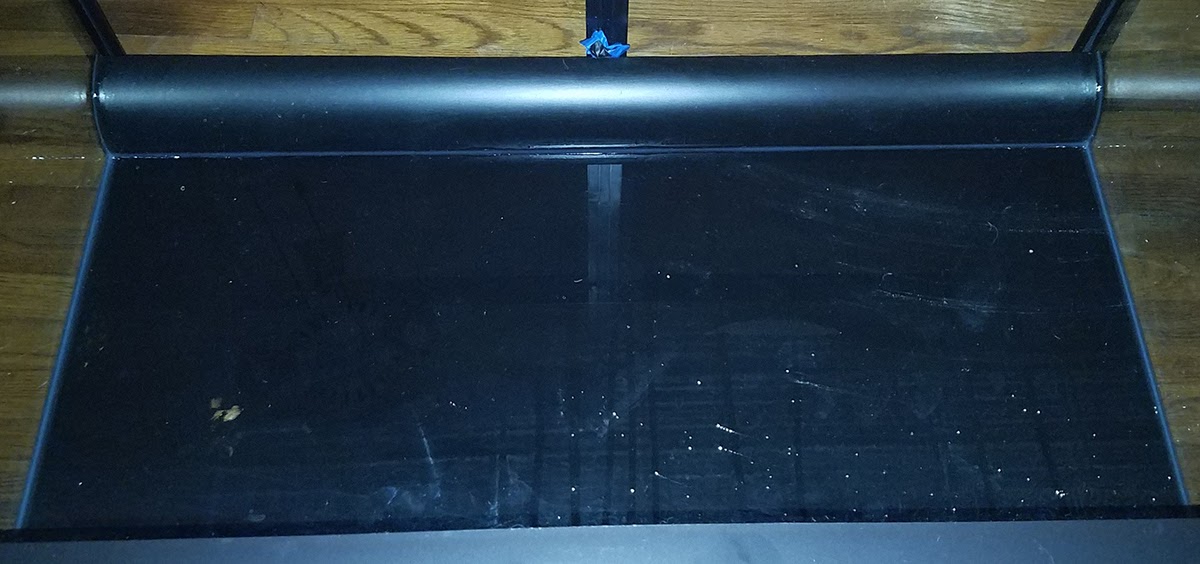
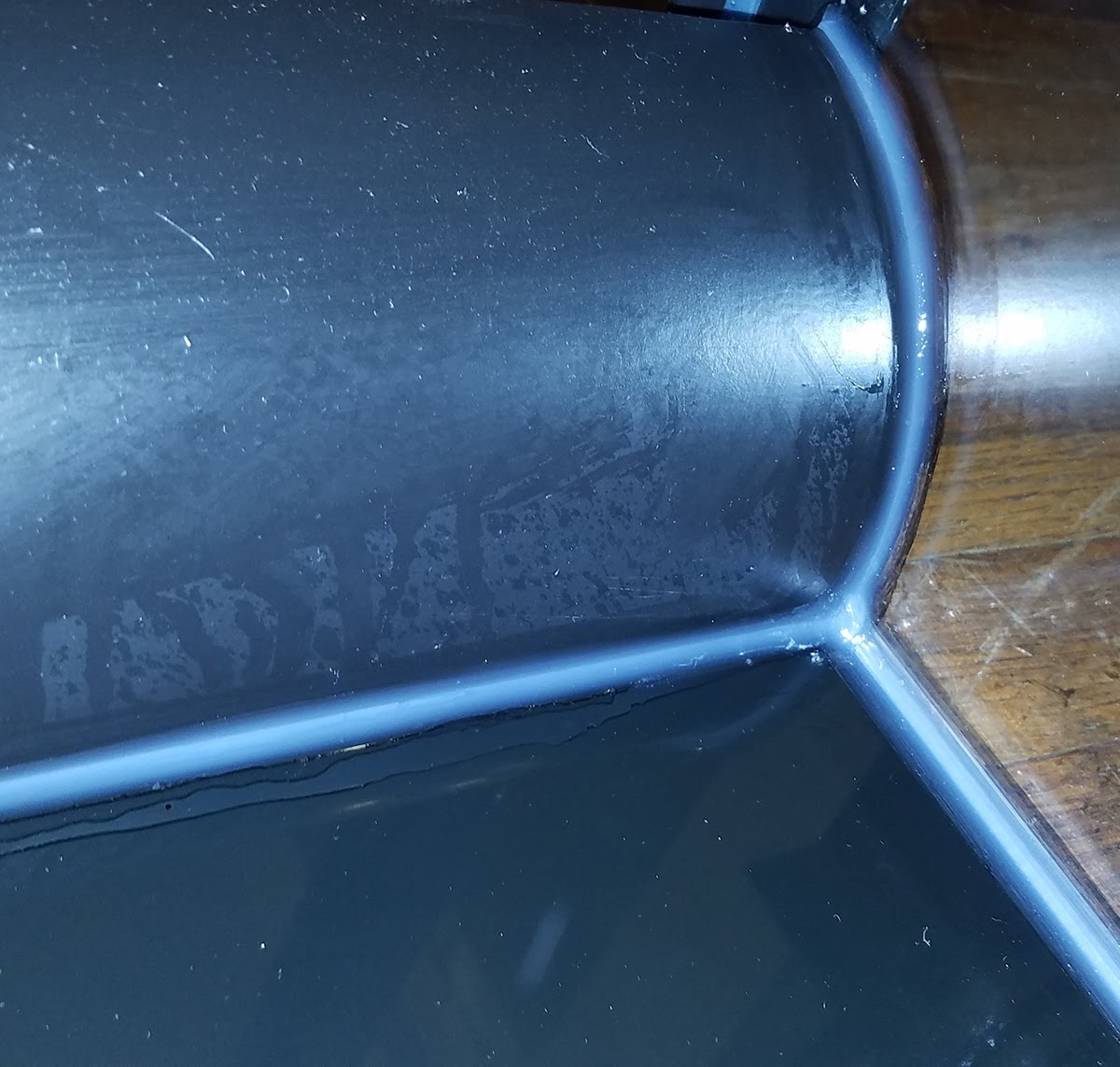
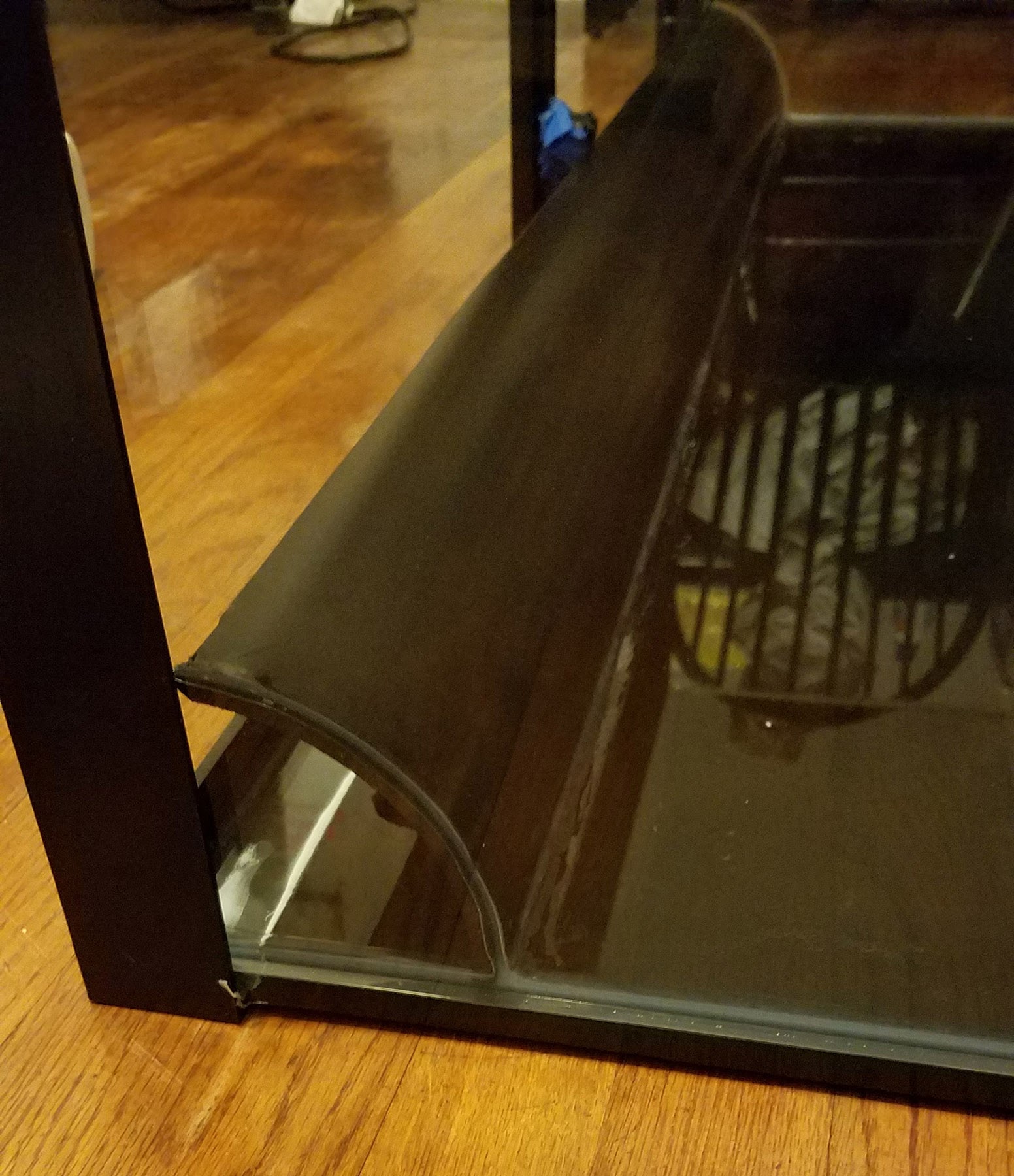
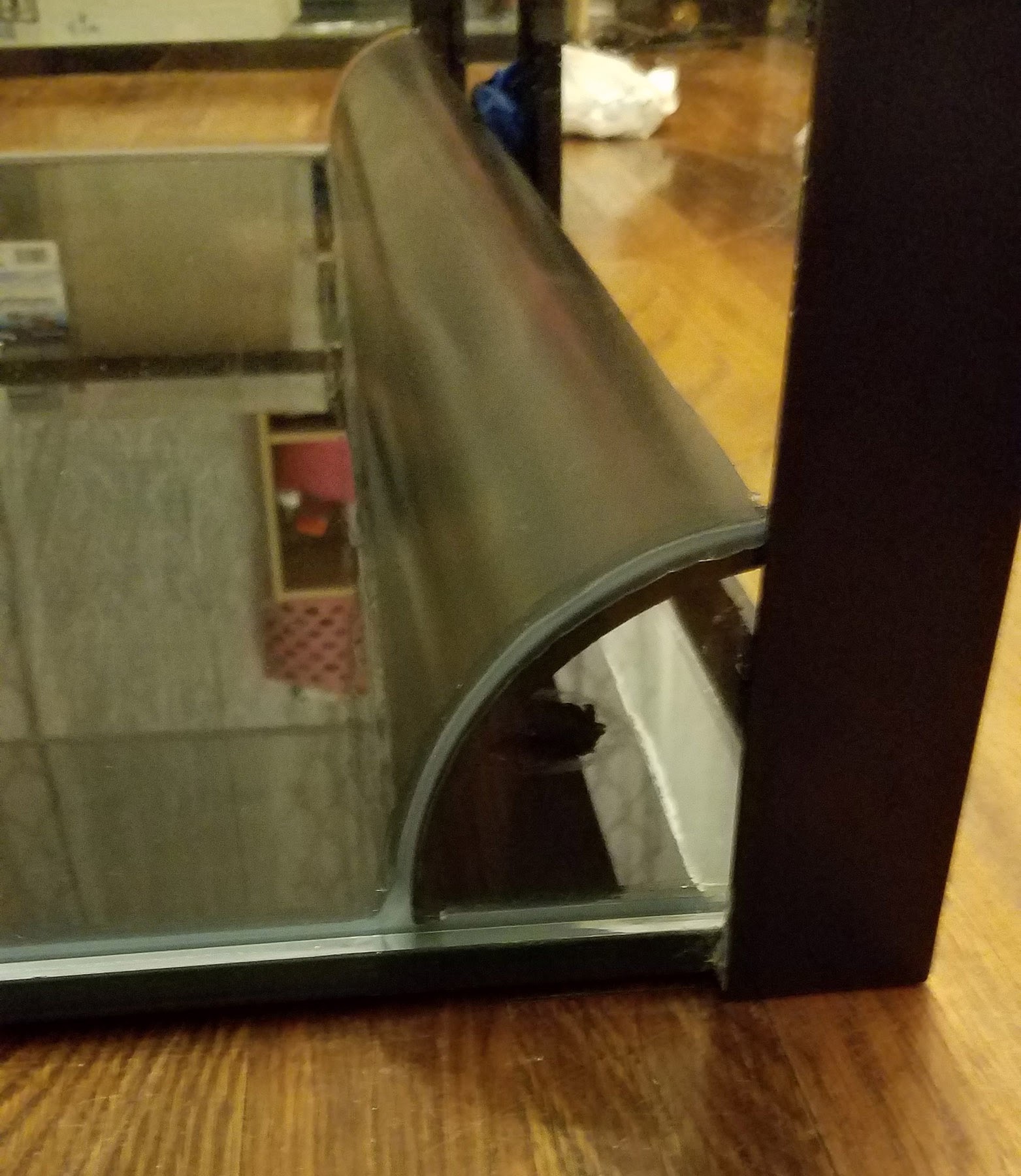
Here you can see the inside of the overflow. The first hole is for the right side return, the next three holes are drains to the external overflow box that will house the bean animal drain, and the furthest hole is the left side return. The returns are drilled 1/2" higher than the drains holes are.
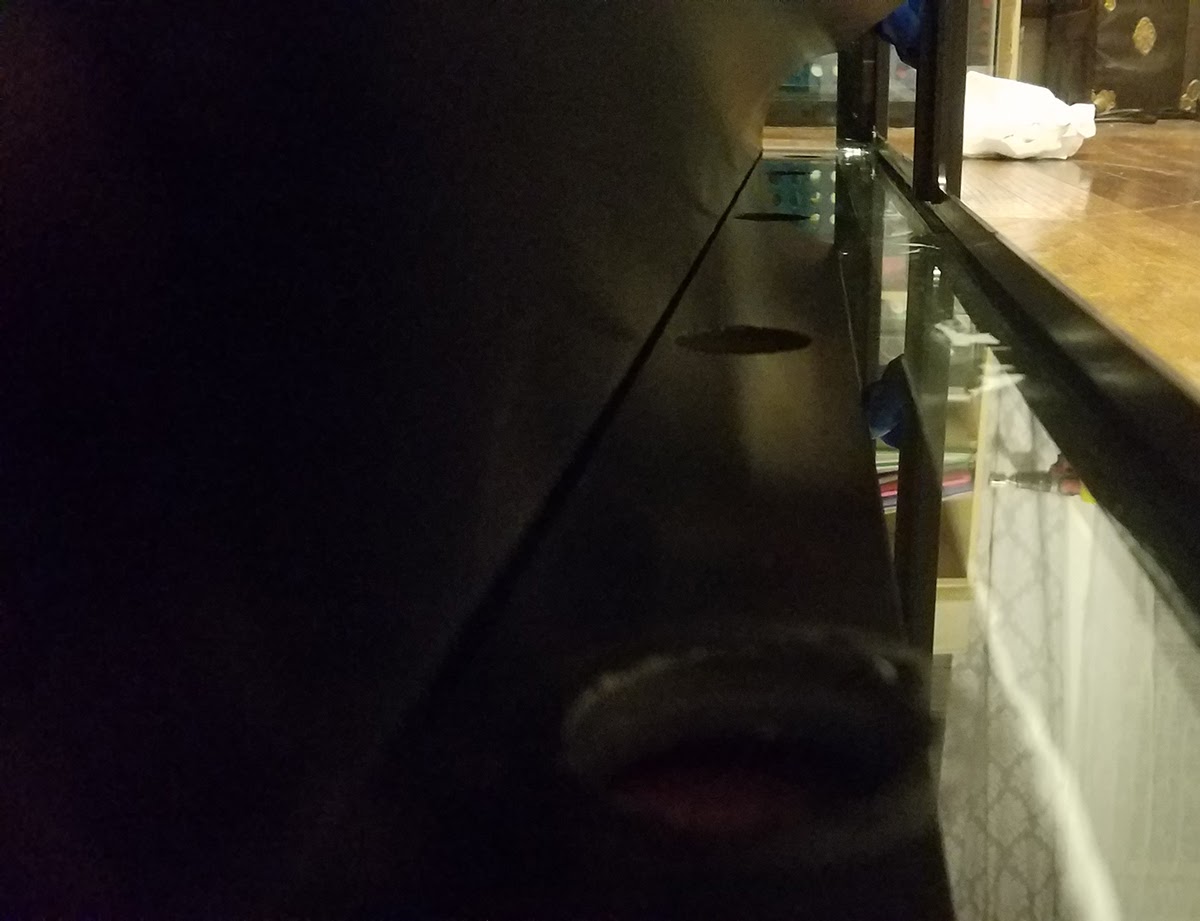
The idea is that this will both reduce noise and salt creep by reducing splashing and also take up less real estate inside the tank. One thing I hated about my internal glass overflow boxes was air bubbles would get caught under them from time to time and it was a pain to clean under them. They also blocked some light at the back of the tank.
By this overflow being round I hope to eliminate all of those issues I had with glass box internal C2C designs.
Thanks for looking!
This was a great overflow, great surface skimming, etc.. The main two problems were salt creep from the water cascading over the vertical glass overflow and sound from said water.
I recently lost my tank due to Hurricane Matthew. We were unable to get back on the island for about 4 days, and even when we got home we had no power for 7 days and no water for about 10. Needless to say it was a total loss. We fared better than some who lost their homes or had major tree/flood damage.
That aside, we decided to go a different route with the new tank, bigger, and in wall. I was playing around with a few overflow designs and wanted something that reduced splashing and noise form water flowing over the weir.
I used to skateboard a lot in my younger days in SoCal and the though of a quarter pipe hit me for some reason. I originally wanted to use an 8" piece of pvc so the quarter pipe would be roughly 4", but a buddy who is a plumber had some 6" laying around and gave it to me for free.
I didn't take pics of cutting the pipe, but it's straight forward. I secured a few 2x4's to a table, then secured 2x6's to the sides of those to make a channel for the pvc pipe to lay in. I secured the pipe to the table and 2x6's with some screws so it wouldn't rotate. I then snapped a chalk line from one end to the other and grabbed my jigsaw and went to town. I did screw a third 2x6 to the top of one of the vertical 2x6's to act as a straight edge for the jigsaw to ride against, ensuring a straight cut.
***I would not recommend trying to cut PVC on a table saw, it tends to twist as it is cut and has a very high tendancy to kick back at you, very unsafe.***
I made my first cut, rotated the pipe 1/4 turn, and repeated the steps. I then clamped the quarter pipe to a table and routed the inside lip where water would flow over with an 1/8" round-over bit to aid in smooth flow over the pipe.
Next, I sanded the pipe inside and out and painted it black to match the background. I then siliconed it in place and am currently waiting on the silicone to cure so I can stand it up, silicone the inside, and then test it for flow.
Here you can see the inside of the overflow. The first hole is for the right side return, the next three holes are drains to the external overflow box that will house the bean animal drain, and the furthest hole is the left side return. The returns are drilled 1/2" higher than the drains holes are.
The idea is that this will both reduce noise and salt creep by reducing splashing and also take up less real estate inside the tank. One thing I hated about my internal glass overflow boxes was air bubbles would get caught under them from time to time and it was a pain to clean under them. They also blocked some light at the back of the tank.
By this overflow being round I hope to eliminate all of those issues I had with glass box internal C2C designs.
Thanks for looking!

















